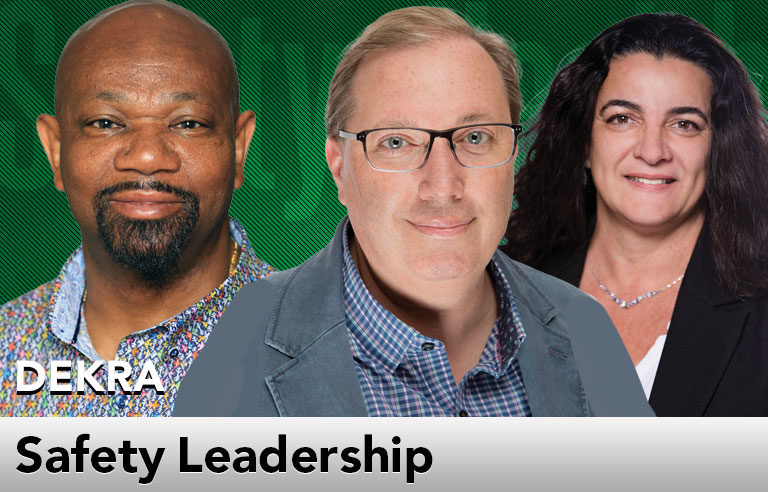Safety Leadership: Keep peer influence teams firing on all cylinders

Editor’s Note: Achieving and sustaining an injury-free workplace demands strong leadership. In this monthly column, experts from global consulting firm DEKRA share their point of view on what leaders need to know to guide their organizations to safety excellence.
When safety influencers unite within their organization, monumental improvements can be achieved.
This has always been the case, but today the market demands that people investment, trust and treatment sit central to everything about a successful company. Gone are the days of simply “involving” employees in decisions that affect them. Employees must be in the driver’s seat of decision-making.
Leaders are faced with asking themselves where they have team decision-making positioned and whether what they’re doing is working for them. More importantly, they must ask themselves whether it’s working for the team, safety performance and the bottom line.
Team members will range from disengaged to involved – and up through fully engaged. Involved team members jump in when asked to help and oblige, as they apply their skills. This involvement is appreciated and helps drive safe work and business performance.
Engaged employees, however, expect to have the decision-making ball kicked to them regularly. They’re ready to participate and would speak up, if they weren’t driving key operational decisions that require subject-matter expertise.
What are some skills held by safety influencers?
Over the past 40-plus years working with clients, we’ve seen the following common threads:
- They take a learning team approach.
- They ask to be in the driver’s seat.
- They constantly seek to hone problem-solving and influence skills to rally others around needed change in the operations. Influencers push to make things safer and better with speed and skill.
- They maintain advanced relationship-building and connection skills and leverage them often.
- They welcome other opinions and win hearts and minds to drive engagement.
With these skills well developed and kept strong each year, the power of peer influencers can be unleashed. You’ll know when such learning teams are firing on all cylinders, when teams exhibit consistency as follows:
- Team influence skills are strong, and big things are accomplished quickly through team engagement.
- Problem-solving is led by the team and supported by leaders removing barriers, as needed.
- A high care and obvious value for peers is felt and palpable every day.
- Learning teams made up of safety influencers exhibit tenacity and get things done.
- Safety influencers can be identified by their professional presence.
Keeping teams of influencers motivated and winning can be supported with attention to celebrating micro-wins by individuals and teams, as well as creating an environment that fosters positive and open interactions, psychological safety, and a continued laserlike focus on reducing exposure to harm.
This article represents the views of the authors and should not be considered a National Safety Council endorsement.
 Claudia Lima is a principal consultant in DEKRA’s (dekra.us) consulting practice. Her areas of expertise include culture assessments and leadership development for senior site leadership, middle managers and supervisors. She also helps organizations achieve and sustain improvements in their safety performance and overall organizational effectiveness.
Claudia Lima is a principal consultant in DEKRA’s (dekra.us) consulting practice. Her areas of expertise include culture assessments and leadership development for senior site leadership, middle managers and supervisors. She also helps organizations achieve and sustain improvements in their safety performance and overall organizational effectiveness.
 Sylvester Mayo is a principal consultant in DEKRA’s consulting practice. As a seasoned management consultant, mediator and educator, he has extensive experience overseeing the training and coaching of individuals and teams, total process management, and dispute resolution.
Sylvester Mayo is a principal consultant in DEKRA’s consulting practice. As a seasoned management consultant, mediator and educator, he has extensive experience overseeing the training and coaching of individuals and teams, total process management, and dispute resolution.
 David Musgrave is a vice president in DEKRA’s consulting practice. He leads the Brain-Centric Reliability practice that focuses on human and organizational performance. His areas of expertise include executive leadership development, decision science and employee engagement.
David Musgrave is a vice president in DEKRA’s consulting practice. He leads the Brain-Centric Reliability practice that focuses on human and organizational performance. His areas of expertise include executive leadership development, decision science and employee engagement.
Direct to your inbox: Sign up to be notified in email about new "Safety Leadership" columns.
Post a comment to this article
Safety+Health welcomes comments that promote respectful dialogue. Please stay on topic. Comments that contain personal attacks, profanity or abusive language – or those aggressively promoting products or services – will be removed. We reserve the right to determine which comments violate our comment policy. (Anonymous comments are welcome; merely skip the “name” field in the comment box. An email address is required but will not be included with your comment.)

